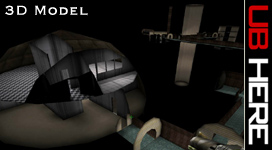Around
2000 I started a project to create a 3D walk-through model of
a Titan I complex using game modeling software.
This
came about because of my involvement with 724-C-- another project that
was just getting under way. I was living far away from the
complex at that time, and obsessed as I was with it, I was going nuts
wanting to explore every square inch of the place. I was instead
stuck hundreds of miles away aching to crawl all over the entire
complex.
I
spent weeks poring over the blueprints and trying to imagine what some
areas really looked like now. Although I had been there on two
different visits to Colorado and had spent several days working there,
I had yet to see many different areas that were hard to reach because
of water or other hazards and obstacles.
When
I was at the Titan site, the entire time I was inside the complex I
could not stop wishing that it had not been salvaged, trashed and
water-logged into rusted disarray.
If
only I could see it as it had once been; go back to 1965 and take a
look right after that last crew had left forever and walked out the
gate.
Of
course I could not go back in time so construction and operational
photos were the best I could do. But such photos were hard to
come by if you didn't know the right people-- and I didn't know anyone.
Besides, a picture goes only so far, especially compared to being
there, walking down one of the tunnels past the trays filled with
bundles of cables and through the interlocked doors of the blast locks
followed by the metallic sound of your footsteps on the steel decking.
How
could a picture compare to that silo smell so distinct to underground
structures as you walk along the corrugated tunnel over six stories
beneath the earth into the cacophonous dome of the Power House where
you are engulfed by sound and machinery?
Naturally,
they could not compare; not even close.
|
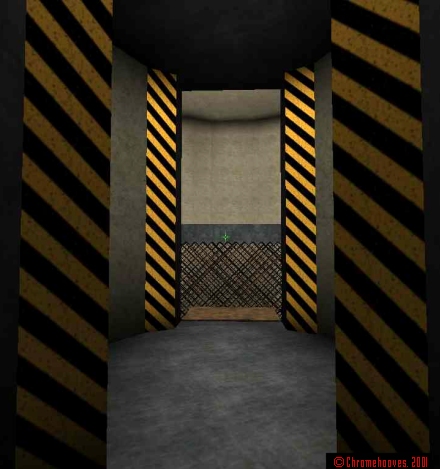
Rough
Forms. The circular passage near the surface in the entry portal
where the revolving blast door (not included) would be located.
Beyond the door are the stairs and the wire mesh that enclosed the
freight elevator.
|
|

The
real deal. Revolving door passage at 724-C.
|
And
that's how the 3D model began. I had already been tinkering
around with WorldCraft
2.0, a game mapping software
(used in developing Quake
and Half-Life among others) that was so finicky,
I marveled at how anything ever got accomplished with it. In
truth I just wasn't experienced using it, but I still had fun
tinkering with it until it invariably crashed on me. Frustrated
I was pleased when I tried UnrealEd
2.0 which had a more forgiving
rendering engine and better interface.
For
those not into 3D first person shooter games where you run around
killing everything in sight, map editors are the software that allows
you to create a little 3D world to rampage around in. You create
rooms, tunnels, buildings or pretty much whatever you can imagine and
add details and lights to make things look pretty and realistic.
You can add elevators and other moving parts and change how the
lighting looks and it pretty much works automatically.
|
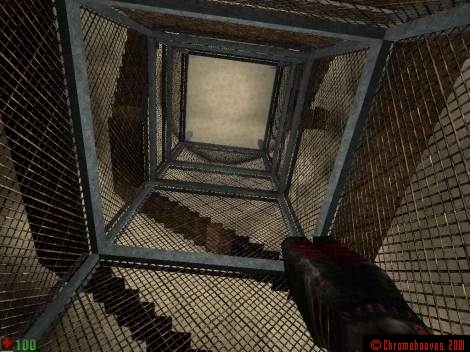
A
view up the portal silo elevator shaft showing the stairs circling
upward to the surface. Essentially correct but very crude, there's
a lot of major details missing.
The
odd projection sticking up in the lower right is an energy rifle
carried by the character in the game "Unreal".
|
|
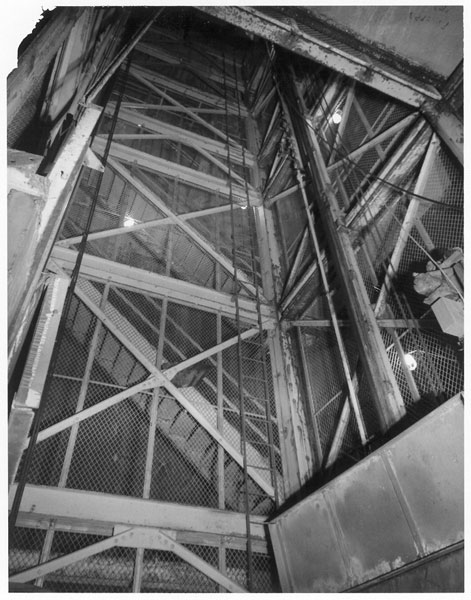
Recent
b&w Polaroid of the entry portal elevator shaft and stairs.
Source
pending approval.
|
It
is because I used game software to do this that you see guns and ammo
laying around or jutting into the view from the players perspective
which is that of actually being there.
|
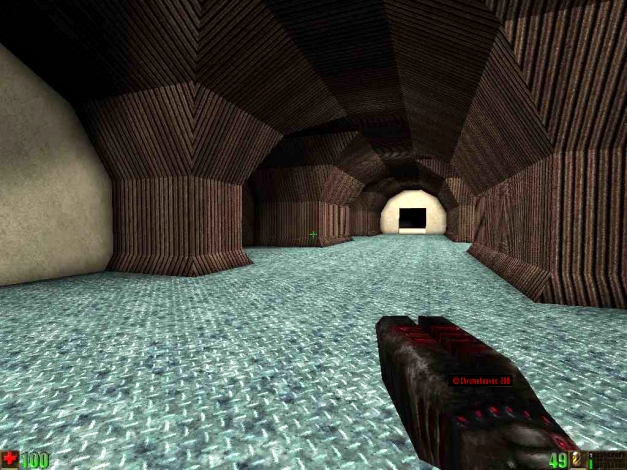
Another
early development still showing the main tunnel junction (T.J.#10)
and looking toward the entrance to the power house. Notice that
the tunnel to the launchers is blocked as it had yet to be added.
Later I added the tunnel and punched a hole through the
"concrete" wall to connect the 2 areas.
Again
we have a weapon jutting into the shot as I neglected to stow the damn
thing when I took the screen capture.
|
|
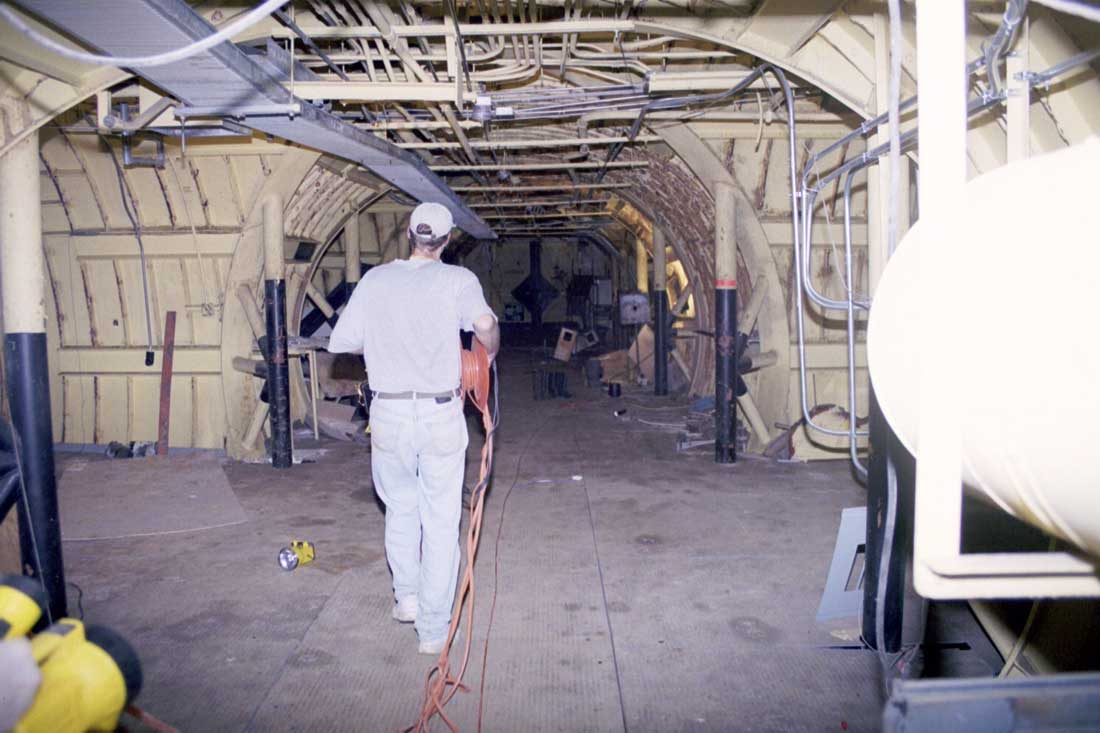
A
recent picture looking toward the power house at 724-C, circa 2000.
|
So
here are the results of my attempt to virtually re-create a Titan
I. I must admit that it falls a bit short of the real thing--
ok, a LOT short of the real thing, but it was still a fun project and
I learned a lot about how the Titans were put together as I stared at
hundreds of blueprints trying to get the details as close as I could.
I
had planned to add as much detail as possible to give the model a good
approximation of what equipment was located where and all the other
elements down to a certain reasonable level of detail.
|
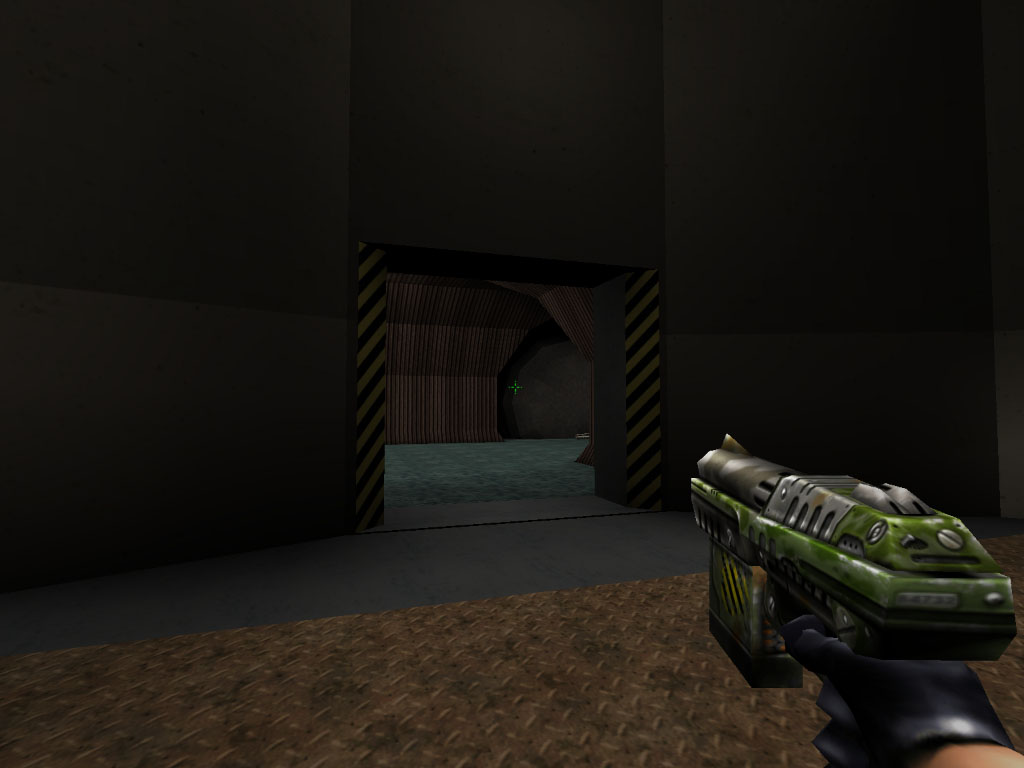
A
way-out-of-proportion shot from inside the freight elevator at the
bottom of the entry portal. The caution strips line the doorway
where the 8'x8' blast doors would have been located.
|
Well,
even that proved to be too much for Unreal Tournament to handle.
If I had been more skilled at using UnrealEd, I might have been able
to pull off something far more impressive, but I was not. Adding
more and more detail just caused things to bog down and produced odd
errors that caused my tiny character to fall through floors or get
stuck in places for no apparent reason.
At
one point I even considered using CAD software to model pretty much
everything, down to the piping, ductwork and electrical conduit-- a
task I am quite certain I would not have lived to complete. But
ultimately I abandoned the project in favor of more productive work, leaving it largely unfinished as
you see here with bare rooms and walls-- a big empty shell.
In
the end, I made a few fatal flaws right from the start. For
example, I got the scale off by a quite a bit, making things huge in
comparison to the little virtual soldier that I assumed the form of so
I could admire my handiwork from the inside.
A
few other features don't quite match up right as with the silo and its
relation to the LOX, personnel and utilities tunnels which are too far
down and off in their relative heights.
The
stairs going up the entry portal are nearly too tall for the guy to
climb and other stairs are to narrow or have an extra landing as with
the ship's ladder in the power house.
|
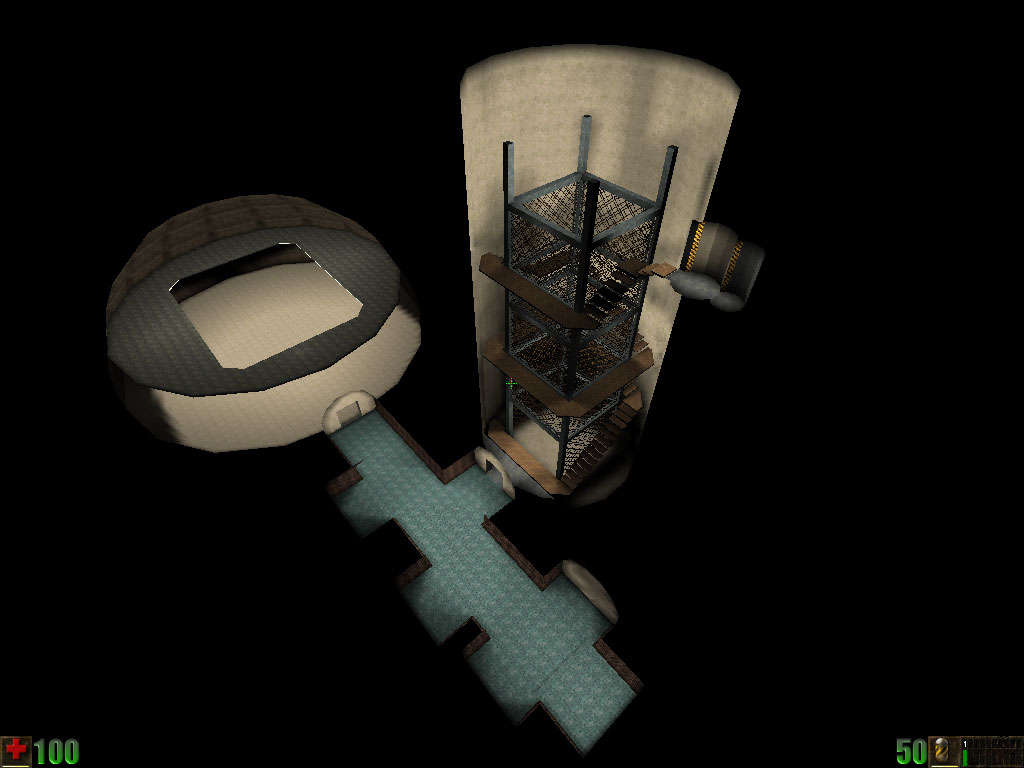
Progressing
slowly, the Titan I starts to take shape: I started with the entry
portal and stairs and then added T.J.#10 which connects all the other
tunnels and then added the power house as I laid out the rough forms of
the complex.
UnrealEd
provided nice cutaway views of the exterior allowing you to
"fly" around the structure and zoom in or out for a better
look.
|
In
spite of all the errors it was still pretty neat to run around a Titan
I complex being chased by killer soldiers in an Unreal Tournament
game.
|
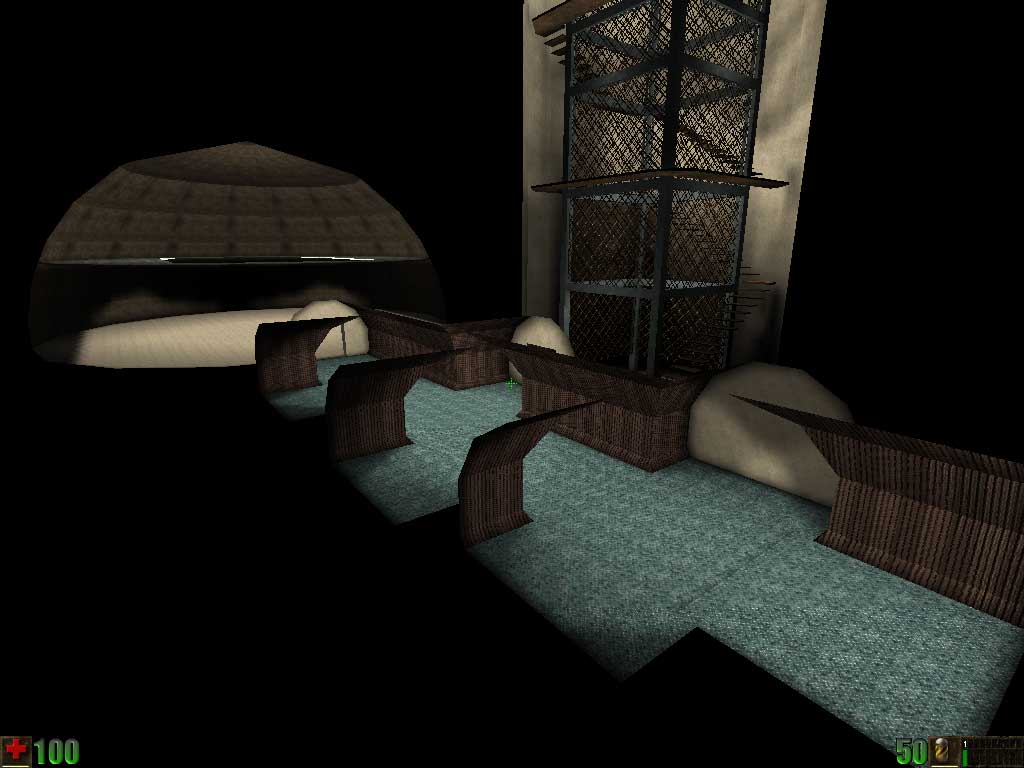
A
modest shell still lacking about 75% of the complex. Tunnels to
the launchers and antenna terminal and other features still haven't been
added.
|
Next
I added the power house air intake and exhaust facilities and added
some more detail to the power house. I added lights as I went
along to brighten up new tunnels and areas as they were added.
In a game editor like UnrealEd newly built rooms are typically
completely dark until you add invisible light sources to illuminate
them.
|
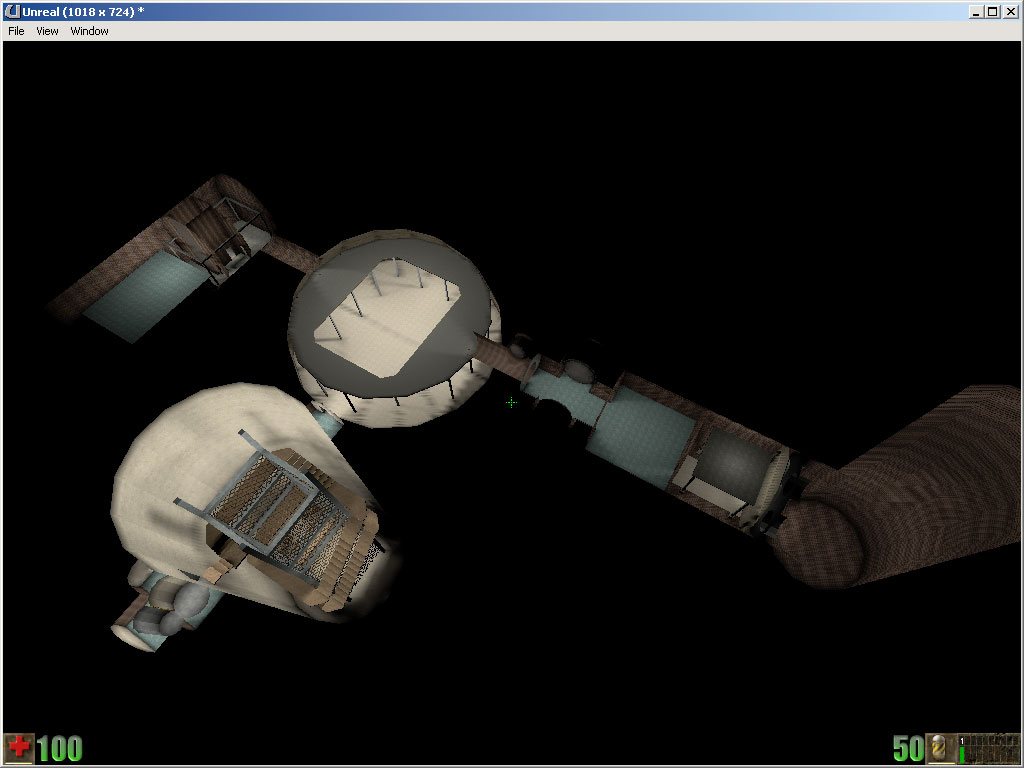
An
overhead view showing the newly added air intake and exhaust facilities
stemming off from the power house at the mezzanine level.
Everything is still pretty Spartan, and the vertical shaft of the air
intake tunnel is still missing along with the dust collectors and other
features.
|
This
does not mean adding light fixtures, or rather, a group of pixels that
look like one, just a light source. Later, you can come back and
add a light fixture to give the illusion that it is giving off light
even though the light is actually coming from a small point just below
the light fixture.
|
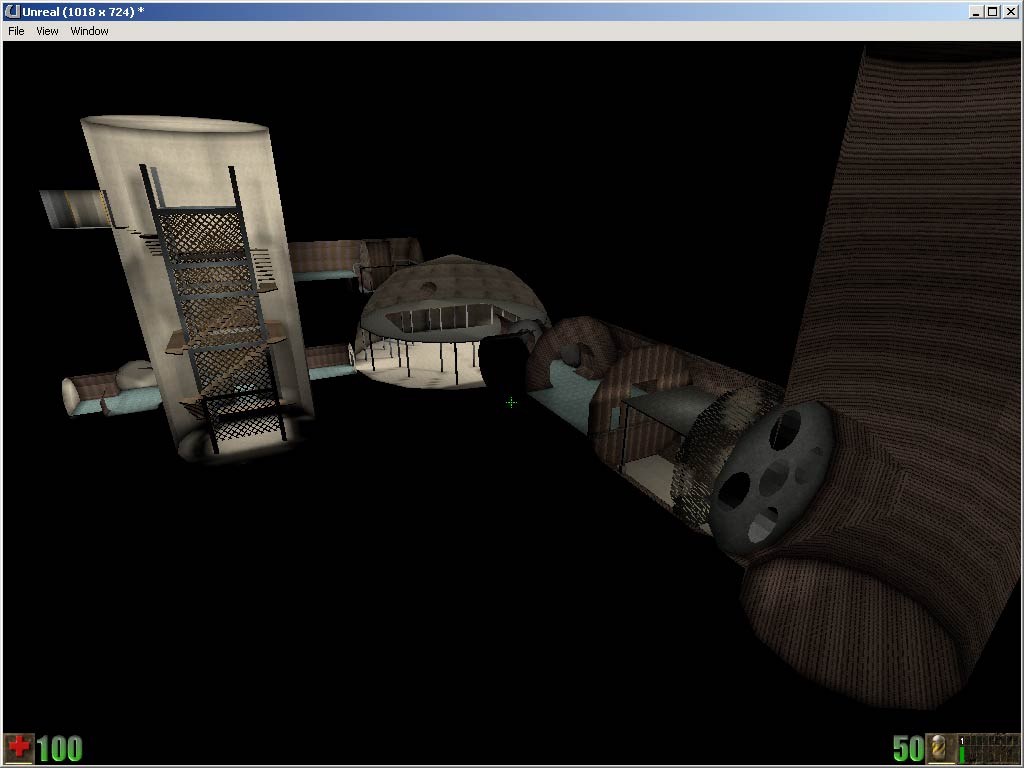
This
view shows the air exhaust shaft where the penetrations for the 5 blast
valves join the shaft and the exhaust tunnel. Still a lot of work
to be done...
|
|

Another
shot of the power house and air intake viewed as a cutaway.
|
|
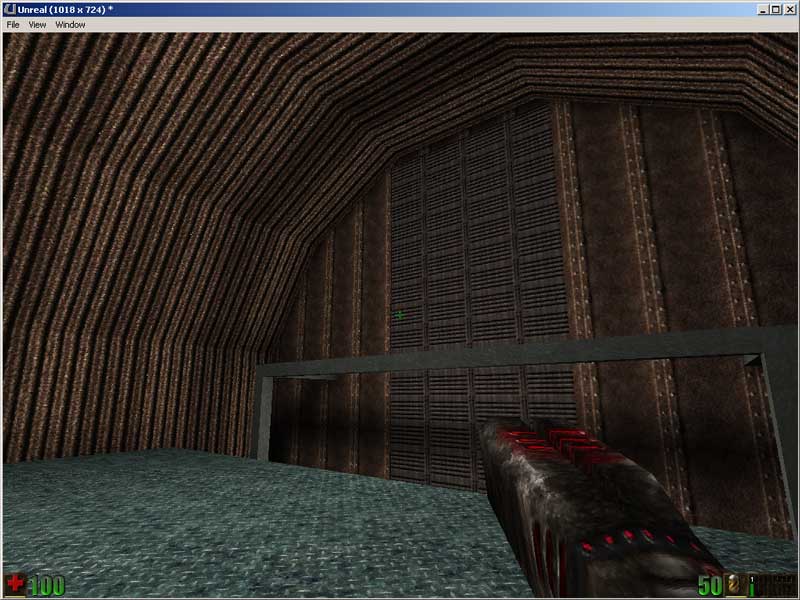
Inside
the air intake facility looking at the heating coils. The dust
collectors are still absent.
|
Adding
a little more detail and things are starting to take shape:
|

An
overhead shot of the air intake facility taken for a proposed
flash-based website back in 2001. The idea was that parts of the
image could be clicked on to zoom in or navigate about. Trouble
was that the site became too large and slow to load in a reasonable time
and was discontinued
early in its development.
|
It
was during the creation of this model that the idea of doing a Titan I
site came about. I made a few abortive efforts, but work, life
and a couple interstate moves kept me from getting much accomplished
for a while.
|
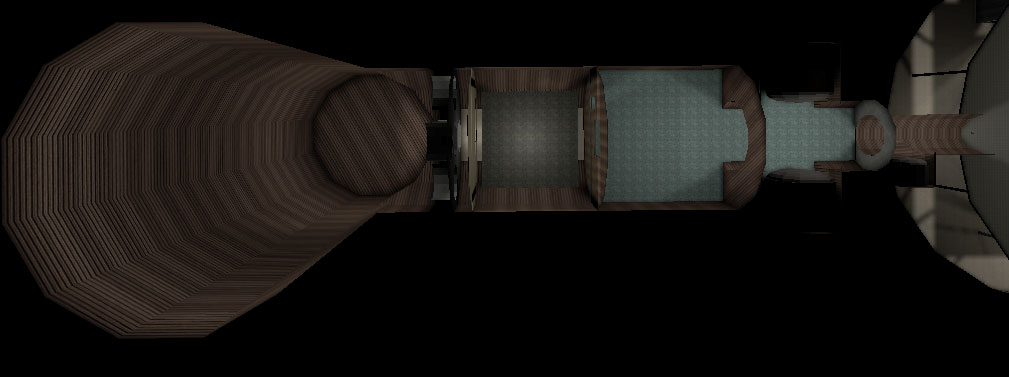
Another
overhead view of the air exhaust facility.
|
|
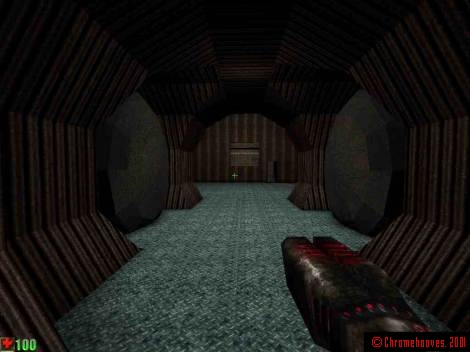
The air exhaust
facility viewed from near the diesel tanks.
|
|
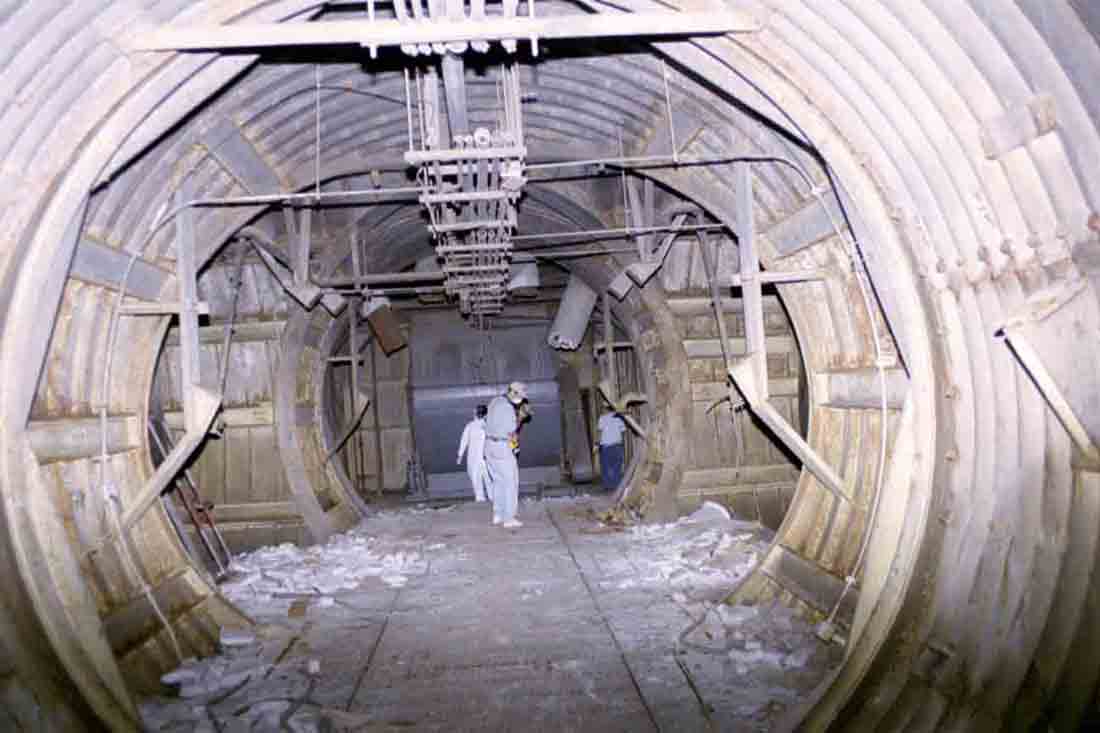
The
air exhaust facility at 724-C. Ok, I guess my diesel tanks
were a bit too far forward, but they still look
cool.
|
More
model pictures and even some video ahead. I saved the best for
last of course! Click below to continue, or select an area on
the map to explore elsewhere.
Titan
I Model Cont.
Current
Location: Titan I 3D Model Part I
|
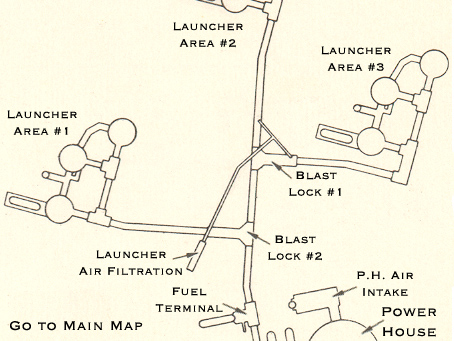
Where
would you like to go next?
|

|
Contact
| Site Map | Links |
Hosted by
InfoBunker

